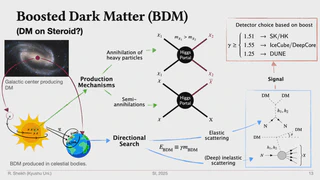Searching for ways to probe pseudo-Nambu-Goldstone-boson Dark Matter
Introduction
The existence of dark matter (DM) is one of the most compelling pieces of evidence for physics beyond the Standard Model (SM). The gravitational effects of DM are well-established, as evidenced by the rotation curves of galaxies and the large-scale structure of the universe. However, its particle nature remains elusive, with no direct detection of DM particles to date. Among several viable candidates, the weakly interacting massive particle (WIMP) scenario has long served as a benchmark due to its natural consistency with thermal freeze-out production. However, null results from direct detection experiments have imposed increasingly stringent constraints on WIMP models, motivating the search for alternative mechanisms that naturally evade such limits.
A compelling class of candidates arises from pseudo-Nambu-Goldstone boson (pNGB), which emerge from the spontaneous and soft breaking of global symmetries. Models for the pNGB DM are particularly attractive as their derivative-dominated interactions (in a non-linear representation of scalars) suppress scattering amplitudes at low momentum transfer, thereby remaining consistent with the latest bounds from direct detection experiments. At the same time, these models retain sufficient annihilation cross section of the DM into SM particles i.e., $\langle \sigma_\text{ann.}^{} v\rangle \simeq 10^{-26}~\text{cm}^3 \text{s}^{-1}$ to account for the observed relic density $\Omega_{\text{DM}} h^2 = 0.12 \pm 0.001$.
Lying dormant for decades, the idea of Boosted Dark Matter (BDM) has recently gained traction as a promising avenue for exploring the nature of DM. The underlying concept of BDM is that DM particles that constitue the halo of the Milky Way galaxy can scatter with the nucleus of a massive celestial body (e.g. Sun or the Earth) if their orbit passes through it. If their velocity after scattering is smaller than the escape velocity of the celestial body, and they get gravitationally bound and start orbiting around the body. Upon additional scattering they sink towards the center of the body and starts accumulating, building up a local DM overdensity concentrated at a relatively small volume. Now there can be various ways, such as semi-annihilation or annihilation of heavier particles into lighter ones, the DM particles will collide with each other and produce highly energetic DM.
